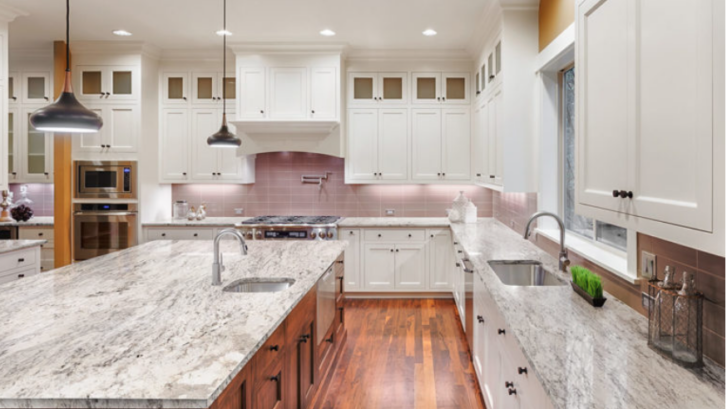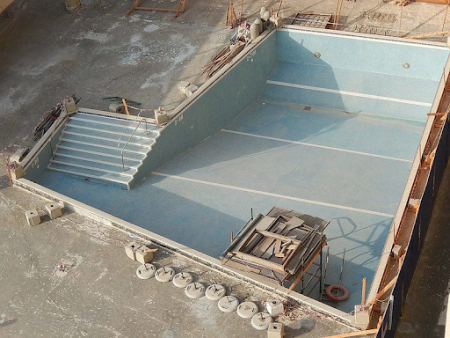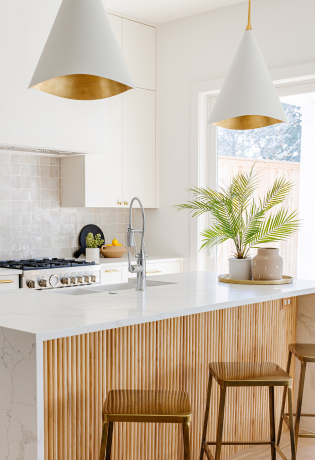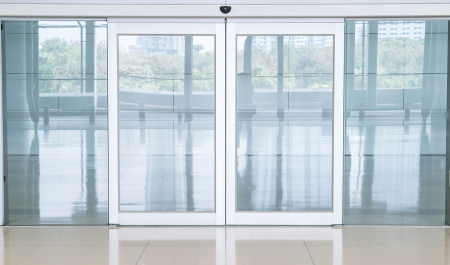Granite countertops have long stood as a hallmark of luxury and durability in kitchen design. Originating deep within the Earth’s crust, granite is an igneous rock formed from cooled magma, which explains its robustness and heat-resistant properties. This natural stone has gained immense popularity in the realm of kitchen renovations for its unique blend of aesthetic appeal and practicality.
Introduction to Granite Countertops
The journey of granite from quarry to kitchen is a fascinating one. Each slab of granite is a piece of Earth’s history, showcasing patterns and colors that have developed over millions of years. Its distinctiveness lies in its natural grain, which means no two slabs are exactly alike. This uniqueness allows homeowners to add a personal touch to their kitchen space.
When considering granite for kitchen countertops, it’s important to understand its properties fully. Granite is known for its hardness, which makes it resistant to scratches and heat. However, it’s not entirely impervious to damage. The choice of granite as a countertop material involves weighing its benefits against its limitations, like weight and the need for periodic sealing.
In this guide, we delve deeper into the world of granite countertops, exploring their aesthetic characteristics, durability, cost, customization options, and much more. Whether you’re planning a full kitchen renovation or simply looking to update your countertops, understanding the nuances of granite is key to making an informed decision that aligns with your lifestyle and design preferences.
With a focus on providing a comprehensive understanding, this article aims to equip you with all the necessary information to decide whether granite countertops are the right choice for your kitchen renovation project.
The Aesthetic Appeal of Granite
Granite’s aesthetic appeal is one of its most compelling features, making it a sought-after choice for kitchen renovations. The allure of granite lies in its rich, natural beauty and the sophisticated touch it adds to any kitchen space. Each slab of granite is a unique work of art, featuring an array of colors and intricate patterns that can’t be replicated in man-made materials. This diversity allows for a high degree of personalization in kitchen design.
The color palette of granite ranges from deep blacks and earthy browns to vibrant reds, blues, and greens, interspersed with flecks of crystal, quartz, and mica that shimmer under light. This vast spectrum of colors and patterns means granite can complement almost any kitchen style, from traditional to contemporary. Whether you’re looking for a subtle, monochromatic look or a bold, statement-making piece, granite offers options to suit every taste.
Granite’s texture adds another layer to its aesthetic charm. The surface can be polished to a smooth, glossy finish that reflects light and creates a sense of openness and space. Alternatively, it can be honed for a matte finish that offers a softer, more natural look. Other finishing options like leathering and brushing provide additional textures, each contributing a different character to the kitchen ambiance.
The integration of granite countertops into kitchen design goes beyond mere appearance. It’s about creating a harmonious balance between functionality and style. Granite works beautifully with various kitchen elements – from cabinetry and flooring to lighting and hardware – offering versatile design solutions. It can serve as a focal point or blend seamlessly into the overall aesthetic, depending on the chosen color and finish.
In summary, the aesthetic appeal of granite countertops lies in their natural beauty, variety, and adaptability. Their unique patterns and colors can elevate the look of any kitchen, making them a popular choice for homeowners seeking both elegance and uniqueness in their kitchen renovation projects.
Durability and Maintenance of Granite Countertops
Granite countertops are renowned for their durability, a key factor in their popularity for kitchen renovations. This natural stone’s resilience stems from its formation under extreme heat and pressure, making it one of the hardest materials available for countertops. This section explores granite’s durability, maintenance requirements, and how they contribute to its long-term value in a kitchen setting.
Resilience Against Wear and Tear: Granite’s hardness is a significant advantage. It is resistant to scratches, chips, and cracks, which are common concerns in busy kitchen environments. This durability ensures that granite countertops can withstand daily use while maintaining their appearance for years. It’s important to note, however, that while granite is resistant to heat, placing hot pots directly on the surface is not recommended as it could cause discoloration or, in rare cases, cracking.
Maintenance Requirements: One of the misconceptions about granite is that it is high-maintenance. In reality, granite countertops are relatively easy to maintain. They require sealing upon installation and periodically thereafter to protect against stains. The frequency of resealing depends on the usage and the type of granite but is generally recommended once a year. Daily cleaning is straightforward – a soft cloth or sponge with warm water and mild soap is sufficient to keep the surface clean and hygienic.
Longevity and Cost-Effectiveness: The initial investment in granite countertops can be higher compared to some other materials, but their longevity makes them cost-effective in the long run. With proper maintenance, granite countertops can last a lifetime, unlike other materials that may show wear or require replacement after a few years.
Dealing with Damage: In the event of a chip or crack, granite can often be repaired, a testament to its durability. Professional repair services can fill and seal minor damages, restoring the countertop’s original appearance.
Reflecting on the Aesthetic and Practical Benefits
Granite’s unique beauty, with its vast array of colors and patterns, provides an unmatched elegance to any kitchen. The durability and resistance to heat and scratches make it a practical choice for a high-use area like the kitchen. These factors contribute significantly to the appeal of granite countertops, making them a popular choice for homeowners seeking both style and functionality.
Weighing the Costs: The financial aspect is a crucial consideration. While granite can be a more expensive option compared to some other materials, its longevity and potential to enhance property value can offset the initial investment. It’s advisable to budget for not just the purchase of the granite but also for installation and any additional customization.
Understanding Maintenance Requirements
Maintenance is relatively straightforward, but it’s essential to recognize the need for periodic sealing and the use of appropriate cleaning methods to preserve the stone’s natural beauty and durability.
Comparing with Other Materials: It’s beneficial to compare granite with other countertop materials like quartz, marble, or laminate to ensure that granite aligns with your specific needs and preferences. Each material has its pros and cons, and understanding these can help in making a choice that best suits your lifestyle and kitchen design.
Environmental Considerations
For environmentally conscious homeowners, it’s worth exploring the sustainability aspects of granite, including its extraction and transport.
Ultimately, the decision to choose granite countertops should be based on a balance of aesthetic preferences, practical needs, budget, and lifestyle considerations. This guide aims to provide a thorough understanding of all aspects of granite countertops, enabling you to make a choice that not only enhances the beauty of your kitchen but also adds to the functionality and overall value of your home. Granite countertops are more than just a surface; they are an investment in your home’s future and a reflection of your personal style.
Conclusion: Making a Confident Choice
As we reach the conclusion of our guide on choosing the perfect granite countertop for your kitchen makeover, it’s important to reflect on the journey we’ve taken to understand this beautiful and durable material. From exploring the geological composition of granite to discussing the practical considerations of installation and maintenance, this article has aimed to equip you with the knowledge needed to make an informed and confident decision.
Choosing a granite countertop is not just about picking a color or style; it’s about understanding the material’s unique characteristics, assessing its benefits, and considering how it will integrate into your kitchen’s overall design. It’s also about recognizing the value of this investment – not only in terms of its aesthetic appeal but also its contribution to the functionality and longevity of your kitchen.
We hope that this comprehensive guide has demystified the process of selecting a granite countertop. Whether you’re drawn to the timeless elegance of this natural stone, its robustness against daily wear and tear, or the unique flair it adds to your space, granite countertops are more than just a surface — they’re a centerpiece that reflects your personal style and meets your culinary needs.
As you proceed with your kitchen makeover, remember that choosing the right granite countertop involves balancing your desires with practical considerations. With the information provided in this article, you’re well-prepared to select a granite countertop that not only transforms your kitchen but also brings joy and functionality to your daily life for years to come.










